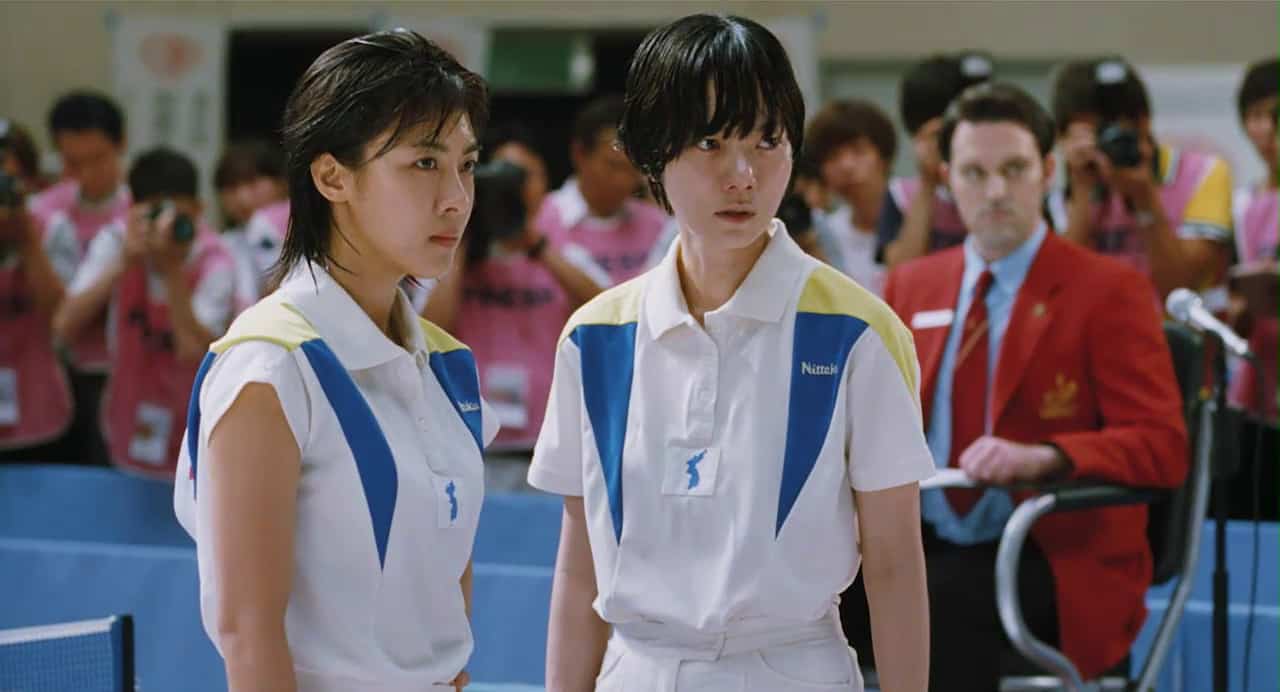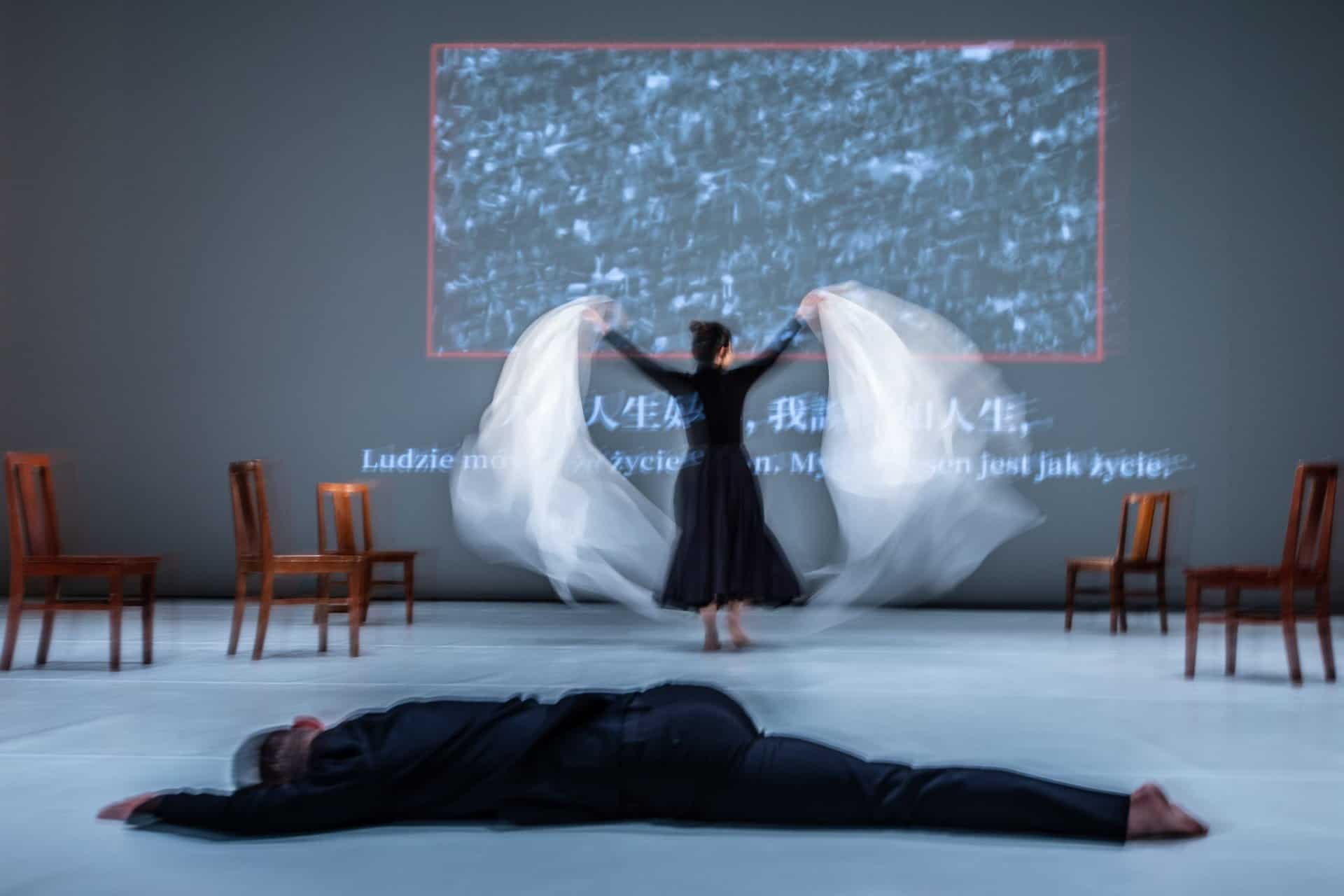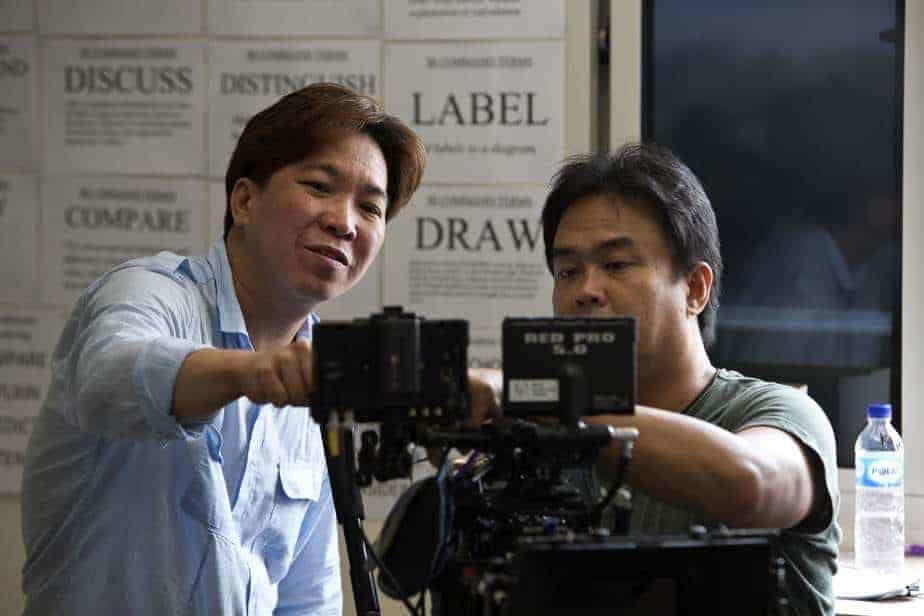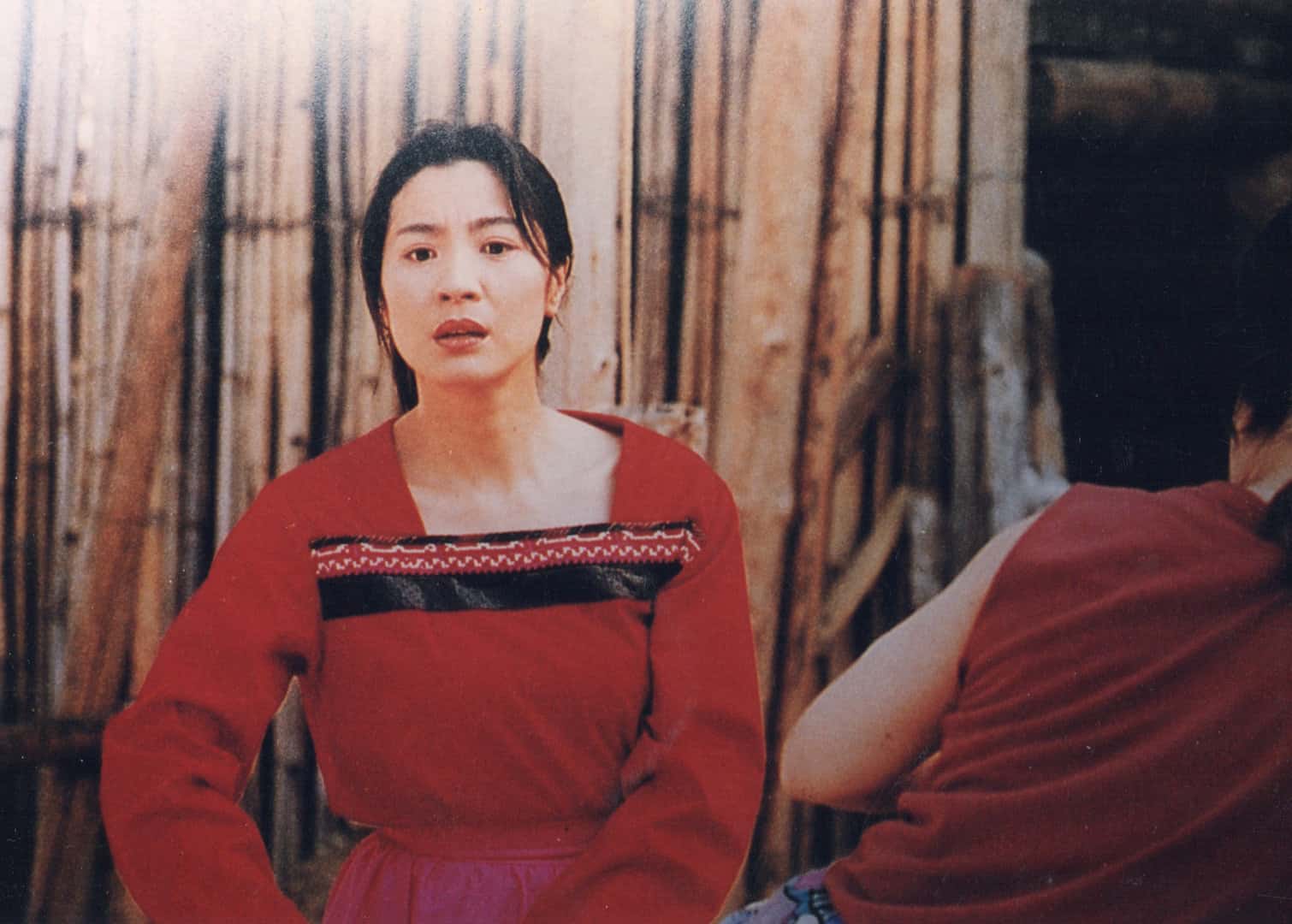by Nathan Stuart
On June 11 2023, Sadao Nakajima sadly passed away in Kyoto after a bout of pneumonia at the age of 88. He leaves behind a rich and deep cinematic legacy, one that has rightly been praised in his home of Japan, but one that has never received its proper recognition in the West, much in part to his work being overshadowed, ironically, by that of his friend Kinji Fukasaku. Outside of niche circles of fans who have zealously consumed as much of his work as possible via bootlegs, not much has been said or written about Nakajima, despite his 1976 Jitsuroku classic ‘Okinawa Yakuza War' already having a cult following, even without a legitimate disc release.
Born in Togane City in 1934, he lost his father at the age of 10 to the Second World War and would go on to graduate from Tokyo Metropolitan Hibiya High School in 1954, before spending a further five years at the University of Tokyo, where he would help to establish the ‘Tokyo Greek Tragedy Research Group', something that would get him noticed, and recruited, by Toei Studios when he graduated in 1959. He then spent five years working under such auspicious names as Masahiro Makino and Tadashi Sawashima, before making his debut in 1964 with the wildly bold ‘Female Ninja Magic', a delightfully colorful period film about a team of female Iga Ninja opposing their male counterparts courtesy of seduction magic, shape shifting and pregnacy….. transfers?

It was in 1966 though when he first really started to gain traction as a director when his crime film ‘Yakuza Hooligans', starring a young and brash Hiroki Matsukata, gave him a lot of attention. A jazzy, punchy thriller about a gang of punks who come up against the Yakuza, it became a hit and firmly marked him as a director to watch. In 1967 he directed, amongst others, the sixth entry in the ‘Code Between Brothers' series, a franchise consisting of standalone Ninkyo (Chivalrous) Yakuza Films and would become widely known as the best film of the series overall. A tale of guilt stricken Yakuza, starring Saburo Kitajima and Hideo Murota, infused with a hefty dollop of social commentary as the infamous rice riots of 1918 loom overhead and eschewing the all too often romanticized notions of the Yakuza code, instead delivering a multi layered drama that criticizes and picks apart said code to its very core.
His first masterpiece would come in 1969 when he directed the remarkable ‘Memories of Japanese Assassinations'. Technically an anthology film detailing nine killings that shaped Japanese history, but in reality the anthology part is actually a series of vignettes that bookend a superb drama chronicling the life of Onuma Sho (played by a terrific Shinichi Chiba), the man who would go on to murder Junnosuke Inoue as part of the ‘League of Blood Incident'. Notably, Nakajima would direct the film with a very even hand, presenting facts as they were known and balancing it to near perfection to avoid controversy over such delicate matters, which would benefit him greatly when it came to his 1970's body of work.
As the 60's ended and the 70's began, he would contribute films to the ‘Sex Document' series, a set of documentary films delving into Japanese sexual practices and customs, while his fictional work saw him adding entries to various franchises such as ‘Modern Yakuza' starring Bunta Sugawara, ‘Hot Springs Geisha' with Miyako Onaya and the first entry in what would become the wildly popular ‘Viper Brothers' series, once again starring Bunta Sugawara. In 1972, he would once again work with Sugawara, delivering the fan favourite ‘Kogarashi Monijro' films, a pair of movies that saw the titular Kogarashi, a wandering gambler by trade, getting into various scrapes whilst on the road in wonderful fashion via an almost genre hybrid between the Ninkyo and Chanbara.
1973 was an important year for Sadao Nakajima. Despite technically leaving Toei in 1967 to become a freelancer, most of his feature work remained at the studio, though 73 would see him briefly jaunt off to ATG to direct another masterpiece in ‘Aesthetics of a Bullet', a terrific character study of a young man with big dreams (Tsunehiko Watase), lured into the Yakuza world by the promise of quick cash and serving again as something of a deconstruction of many of the mythos that surround the life of crime. In the same year, with the success of “Battles Without Honour and Humanity” helping to popularize the Jitsuroku genre (literally real life/true account), Nakajima too would go on to direct his first ‘proper' entry to the genre in his ambitious ‘Tokyo-Seoul-Bangkok Drug Triangle' which took five months of overseas filming to complete and was based on Tsusai Sugawara's real life experiences as he campaigned to eradicate Japan of its ‘Three Evils' (Prostitution, Drugs and STD's).
From that point on, Nakajima's name would become synonymous with the Jitsuroku genre, filming a number of films based on, or around, real life gangsters/criminals. In 1974, he would direct ‘Violent Fraternity' starring Bunta Sugawara and Noboru Ando, based on Ando's own experiences and taken from his memoirs, as well as the brutal, but absolutely brilliant ‘Rapacious Jailbreaker' about a career criminal who would escape from various prisons a total of seven times. Together with ‘Shimane Prison Riot' (also a terrific film, notably seeing Nakajima himself, alongside scriptwriter Kozu Minoh, travelling to various facilities to record actual accounts of riots and breakouts) and ‘Robbery Arson Murder', they would become an unofficial trilogy called the ‘Hiroki Matsukata Jailbreak Trilogy'.
1975 would see the aforementioned ‘Shimane Prison Riot', as well as ‘Violent Money Network' an important stepping stone in Toei's Jitsuroku line that saw the studio attempt to tackle the financial side of the Yakuza, depicted here by Hiroki Matsukata as a Sokaiya (financial fixer) in a tense and fast moving thriller. 1976 however, brought an undeniable hot streak that would see the director at the height of his powers. ‘Okinawa Yakuza War' saw the master depict Okinawa's gang battles as a sweaty, brutal, fever pitch of violence that would draw an award winning performance from Shinichi Chiba as an unhinged Yakuza boss, while ‘A Savage Beast Goes Mad' saw the director show off his prowess in the vehicular action realm, competing against his friend and rival, Kinji Fukasaku, whose ‘Violent Panic' was filmed alongside his own. ‘Savage Beast' has the always brilliant Tsunehiko Watase (performing his own stunts) clash with hijackers on a bus for a breakneck paced thrillride lasting a mere 78 minutes that shows its director's skill in creating pure, raw kinetic energy on-screen.
Check also this article
It would be remiss not to mention ‘Osaka Shock Tactics' when talking about 1976, which Director Nakajima originally conceived in 1969, but shelved due to Toei President Shigeru Okada not seeing a market for it, then resurrecting the project after the success of the Jitsuroku line. A blisteringly brutal tale based on the ‘Meiyukai Incident', a month of violence in 1960 that saw Osaka rocked by violence as the Meiyukai, a street gang comprised of many ethnic Koreans and Chinese try to stand against the might of the Yamaguchi-gumi, Japan's most powerful Yakuza organisation to this day who were making inroads to the region (with Nakajima carefully changing names, details, places etc, a smart move considering the Yamaguchi's Toei ties) and resulted in a vicious war that eventually saw the Meiyukai capitulate, with all the gangs executives presenting their severed fingers to the victorious Yamaguchi. Director Nakajima directs with a rare ferocity, once again showing his delicate balance and even handed nature as he lets stars HIroki Matsukata and Tsunehiko Watase work their magic. Its objectively one of his very best films, with legendary scriptwriter Koji Takada calling it Nakajima's masterpiece and enjoying quite the reputation even now in its homeland.
As the 70's wound down, so did the popularity of the Jitsuroku film, making way gradually to a more romantic, slower paced style of crime film that would persist throughout the next decade. But Nakajima, always adept at embracing change, would also deliver his ‘Nihon No Don' (Japans Don) trilogy during this time. A sublime, ambitious crime saga, epic in both scope and scale that saw him assemble Toei's best and brightest, including everyone from Hiroki Matsukata, Bunta Sugawara and Shinichi Chiba, to bonafide screen legends such as Toshiro Mifune and Koji Tsuruta, whilst not forgetting to include Toei's very own ‘Piranha Corps', naturally. The result was a dense, but remarkable Godfather-esque saga that simply has to be seen and even included a nod to The Godfather's infamous ‘Horse head' scene, that Nakajima mangaes to one up in a truly unforgettable way.
Then came the 80's, a markedly different decade for both Japan and its film industry. Here, Nakajima would slow down, also becoming a professor at Osaka University of Arts in 1987. Which is no bad thing after such a prolific career, one whose quality matched quantity (a rare feat indeed). 1982 would see him return to the Yakuza genre with ‘Domineering', based on a novel and once again starring Toshiro Mifune, the film is something of an oddity, one that arguably bites off more than it can chew. But, crucially, it shows again how adept Nakajima was at embracing change, as he tips his cap to the past, whilst fully adapting to the rapidly changing industry and making a movie that had a foot firmly planted in both the 70's and 80's. The year after he would partner with contemporaries Kinji Fukasaku and Junya Sato in directing ‘Theater of Life' a newer adaptation of Shiro Ozaki's novel which had been adapted a number of times already. 1984 would see the master once again show his diversity as he turned his attention towards Tomiko Miyao's novel ‘Jo No Mai', based on the life of painter Shoen Uemura, the first woman to be awarded the Order of Culture. Also very worthy of note is his 1985 ‘Seburi Story', a tragic and hard hitting drama about the culturally isolated Seburi, exploring the various unique customs and traditions that they live by.
The 90's, another hugely important turning point in Japan's cinematic landscape, would once again see the director excel in the genres he knew best, proving once more that he not only was still relevant, but understood the changes necessary to remain so. In 1990, he would direct ‘1750 Days of Turbulence', a Yakuza film that evokes a similar feeling to his earlier ‘Nihon No Don' series that remains something of a hidden genre gem, while 1991 saw him tackle what is arguably the very best of the popular ‘Yakuza Wives' series with his entry ‘Revisited', as well as another solid, if unremarkable Yakuza melodrama in ‘Yakuza Warfare'. 92 saw him direct ‘Oda Nobunaga', a lighthearted but excellent biography of Japan's famous warlord. He would also gain a key position in Kyoto's Cultural committee and even later on in the 90's would broadcast live on KBS Kyoto every Wednesday at 8:00, introducing shows and providing anecdotes and context for the viewers, drawing on his wealth of knowledge.
Check also this article
The 2000's were largely quiet for him, cinematically speaking. Though is terrific 2015 documentary ‘Chanbara: The Art of Japanese Swordplay' not only shed light on the history of the genre in an enlightening way, particularly in how it smashes some long held stereotypes/beliefs in the West when it came to the genre, but also gave a glimpse into his natural gift for speaking and showed his fans his deep knowledge and passion for film alongside his sweet, kind demeanour. His grand return to the screen came in 2019 with ‘Love's Twisting Path', delighting his fans with a Chanbara/Jidaigeki that proved there's plenty of life left in the genre yet, if you know what you're doing.
Directing wasn't his only profession though, he was also a writer, of both scripts and books on film, as well as a lyricist and even a YouTuber who opened his own channel in 2020 to share valuable stories and insights into his lengthy career. He directed TV shows, including a number of popular Jidaigeki series and was awarded many times, ranging from Cultural Merits to Chairman Awards at the Japanese Academy of Film. Spoken of highly in film circles, by his peers and those who worked with him, he left a mark on all those around him, often described as man of dignity, whose films which were so often hard edged, yet he always managed to place character first and foremost, painting even the most irredeemable of characters with a detailed and intricate brush, making them human, and therefore believable.
His loss is a huge one, both in the history of film and one to me personally, as an avid fan who counted him as one of my very directors and one who had a profound and lasting impression on me, and will continue to do so for the rest of my life. However, he leaves behind him a rich and varied film legacy, one that is ripe for discovery and exploration in the West and when that happens, he will gain the recognition he so richly deserves here, continuing his legacy and helping his work to live on forever in the hearts of his fans. Here's hoping it happens sooner, rather than later.
















